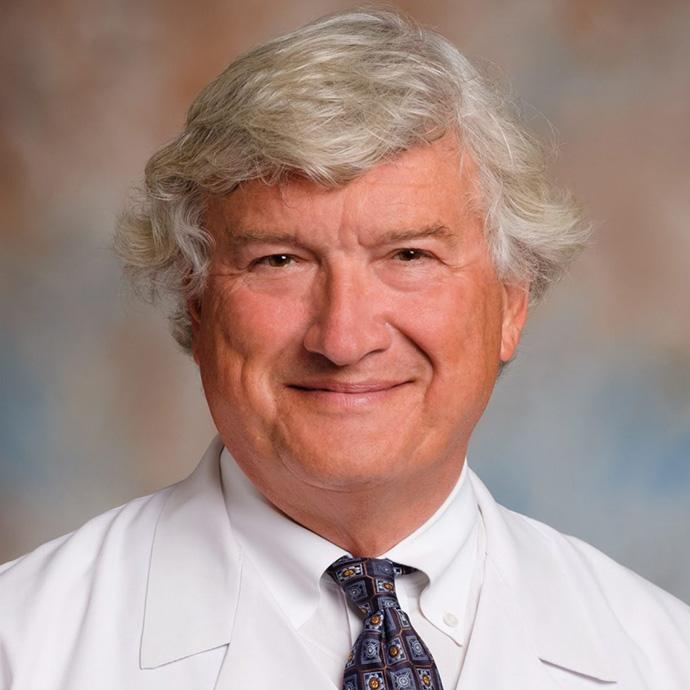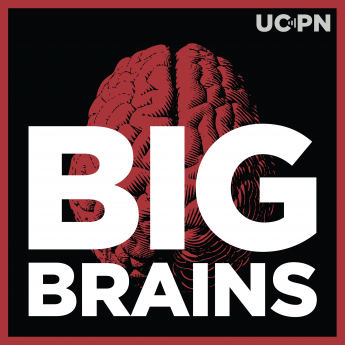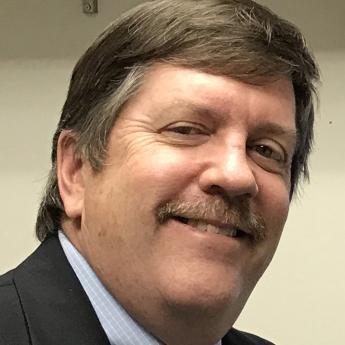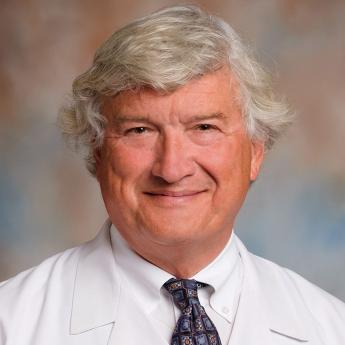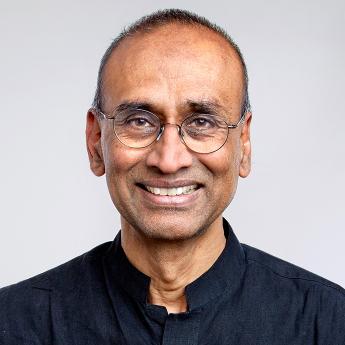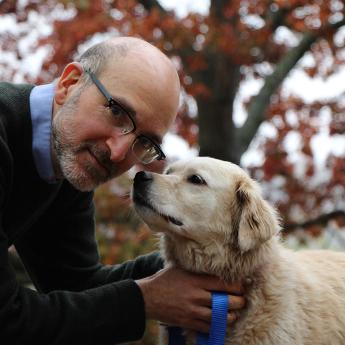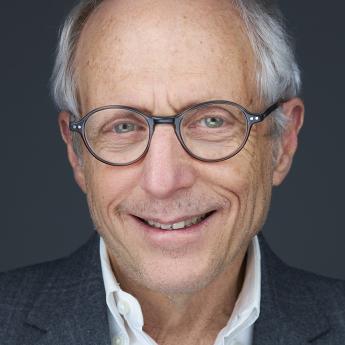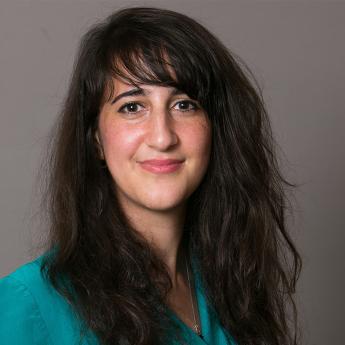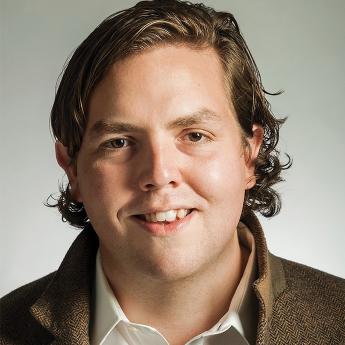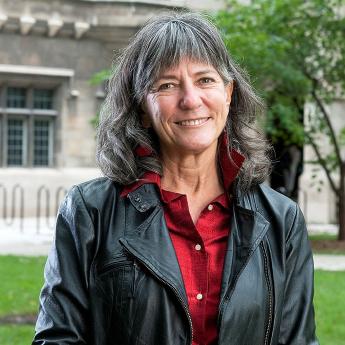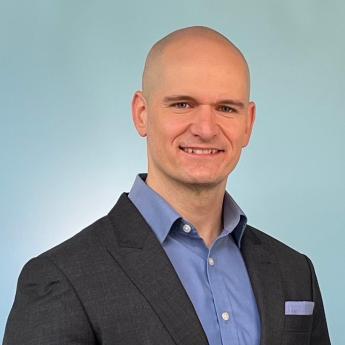Show Notes
We've all heard the phrase "Manifest Your Destiny" when it comes to wanting that new promotion, figuring out a new career path or just trying to achieve that long-term goal. It turns out that the act of manifestation is not merely pseudoscience—it actually has a body of research in neuroscience to back it up. Dr. James Doty has been exploring this topic throughout his career; and offers scientific research as well as tools on how to manifest your goals in his new book, Mind Magic: The Neuroscience of Manifestation and How It Changes Everything.
James Doty is a clinical professor of neurosurgery at Stanford University, where is also the founder and director of the Center for Compassion and Altruism Research and Education. He explores how manifestation is not only a tool to achieve what we want, but it is also fundamentally about being selfless and caring for others in order to activate our deep internal happiness.
Link to the advertised Chicago Booth Review Podcast: https://www.chicagobooth.edu/review/podcast?source=cbr-sn-bbr-camp:podcast24-202405/02
Subscribe to Big Brains on Apple Podcasts and Spotify.
(Episode published May 2, 2024)
Subscribe to the Big Brains newsletter.
Please rate and review the Big Brains podcast.
Related:
- 5 Must-Read Books to Fuel Your Growth in the Age of AI—Inc.
- Prince Harry, Meghan Markle Made Secret Visit To Stanford Researcher Who Studies Science Of Compassion—CBS News
- Mind Magic: The Neuroscience of Manifestation and How It Changes Everything — Penguin Random House
Transcript:
Paul Rand: We’ve all heard the phrase manifest your destiny. Over the centuries, society has embraced these kinds of ideas, from the law of attraction to the secret to drawing vision boards. Well, it’s a belief that there are external powers, if you will, in the universe, and that if you emit your own positive energy, then that will result in positive energy coming back to you, and this started in, I think, the first and second century with hermetic philosophy, and then ultimately, to the 20th century, where we had Napoleon Hill, this idea of think and grow rich, and followed by The Secret by Rhonda Byrne.
Rhonda Byrne: Ask, believe, receive.
Reporter: Well, that is the concept of a DVD and book featured today on Oprah. The Secret is being dubbed as the key to creating the life that you really want. The DVD and the book by the same name are making author Rhonda Byrne a lot of money, but not everyone is sold on The Secret. Some are calling it old-fashioned snake oil in a new package.
James Doty: There are a subset of individuals, frankly many of whom use woo-woo and pseudoscience to fill auditoriums where they charge people. That is not in any way my agenda.
Paul Rand: That’s Dr. James Doty, the author of a new book called Mind Magic: The Neuroscience of Manifestation and How it Changes Everything.
James Doty: This is the ability to embed your intention to actually make that intention manifest, or make your goal occur. Essentially, every one of us every day is trying to manifest our goals. We’re daydreaming. Imagine and create narratives about what we want.
Paul Rand: You might be wondering, why are we talking about such a pseudoscience-seeming topic on a podcast about research? Well, there’s actually real neuroscience to back up the idea of manifestation.
James Doty: This idea of manifestation has been taken out of the realm of woo-woo and pseudoscience and has been examined with an immense amount of data and references behind it. I think if you look at what is written there, the logic of it makes complete sense, and frankly, is irrefutable.
Paul Rand: Doty isn’t just an author. He’s also a clinical professor of neurosurgery at Stanford University, where he’s the founder and director of the Center for Compassion and Altruism Research and Education, and he has used his deep knowledge of the inner biology of our brains to show where manifestation and neuroscience connect.
James Doty: And these networks work in conjunction, if you will, to manifest. The key is, how do you get access to the various brain, or cognitive brain, networks that allow you to maximally manifest?
Paul Rand: If you can understand the biology of that process, you can understand how to make it work for you. But it’s not as simple as just closing your eyes and hoping your wish will come true.
James Doty: There’s some people who read about manifestation, they go, I expected this to happen exactly as I envisioned it. It didn’t happen. Or, it didn’t happen at all. Well, there are no guarantees here. What we’re talking about are what are the mechanisms and the actions I have to take to maximize my ability to manifest? But there are other external circumstances that impact, and it may be that you are not aware of certain things that are impeding your progress, or there are other larger things that are having an effect. So, we’re talking about how do we maximize our ability. It’s not, I guarantee this will happen to you.
Paul Rand: Welcome to Big Brains, where we translate the biggest ideas and complex discoveries into digestible brain food. Big brains, little bites, from the University of Chicago podcast network. I’m your host, Paul Rand. On today’s episode, the neuroscience of manifesting your destiny.
The University of Chicago Leadership and Society Initiative guides accomplished executive leaders in transitioning from their long-standing careers into purposeful, encore chapters of leadership for society. The initiative is currently accepting candidates for its second cohort of fellows. Your next chapter matters, for you and for society. Learn more about this unique fellowship experience at leadforsociety.uchicago.edu.
Doty’s journey to study the neuroscience of manifestation began with a serendipitous moment, but growing up as a kid in poverty in Lancaster, California, he couldn’t quite see beyond the unfortunate circumstances he was living in.
James Doty: I grew up in challenging circumstances, where my father was an alcoholic and my mother had a stroke when I was a child and was partially paralyzed, was chronically depressed, attempted suicide, and we were on public assistance. And obviously, that combination of things leads to, for many, an extraordinary negative impact on their lives. I did not realize my childhood was like living in a war zone. And what happens to so many children is, as they grow up, they get post-traumatic stress disorder. In those environments that are chaotic and unpredictable, what happens to all of us is that we never know what’s going to happen. As a result, our muscles are always tense, ready to react. And if you’re always in that position, it’s hard to attend and be present. And of course, attention and being present are necessary to learn and to achieve.
Now, I was fortunate in that at the age of 12, strangely enough, I ended up walking into a magic shop, and what happened was I met a person who really changed the trajectory of my life. Turned out that she was the owner’s mother. She actually knew nothing about magic. But the interesting part of our conversation was that she knew a lot about people. She started asking me some questions, which frankly, because of my own insecurity and shame, I generally did not talk about. And after 20 or 30 minutes, she said to me, she said, “I really like you. I’m here for another six weeks, and I think I can teach you something that can really help you.” What she ultimately taught me was what would now be termed a mindfulness practice. One of the first things she did was to teach me a relaxation technique, and then a technique to be present, or attend, and the other interesting aspect was she made me understand that the negative dialogue in my head was not truth.
Paul Rand: Pretty insightful lady, talking to a 12-year-old.
James Doty: I was not really that self-aware. I mean, to be bluntly frank with you, I showed up because, one, I had nothing else to do, and two, she was nice, and three, she was feeding me chocolate chip cookies. So, those were the high motivators.
Paul Rand: Gotcha.
James Doty: And then of course, she talked about a technique of visualization, or manifestation.
Paul Rand: That moment in the magic shop would lead Doty on a path to becoming a leading neurosurgeon and an expert on the biological processes that define how our brains work. Years later, he would be surprised to find that there are actually neuro-scientific explanations for how manifestation works. They revolve around the interplay between the conscious networks in our brains and the unconscious ones.
James Doty: We have a conscious present, which actually responds to our external world.
Paul Rand: This is managed by the central, or executive, control network of our brains.
James Doty: We have access to that. Then, we have a subconscious, which we have some access to.
Paul Rand: The subconscious is managed by the salience network, the attention network, and the default mode network.
James Doty: So, these are cognitive brain networks, which means they’re not necessarily discrete parts of the brains, but are combinations of areas in the brain that are activated with certain thoughts or events.
Paul Rand: At the end of the day, manifesting is really about using your conscious networks to place your desires and goals in the unconscious ones.
James Doty: As an example, one of the problems with the law of attraction oftentimes is that, oh, it didn’t happen, it’s your fault. You did not put the positive energy out there. What we’re talking about is how the brain works, which is the controller of everything, in terms of us. There isn’t some magic in the universe that’s going to fix their lives. But in terms of how do I maximize the possibilities, it’s using what’s outlined in the book. It’s not looking for some magical being outside of yourself to fix everything for you.
Paul Rand: I think you’ve given a big picture, but very practically speaking, it’s almost learning how to activate or deactivate the four major networks that are in our brain. And I wonder, you started really talking about the one that’s probably been researched the most, which is default mode network.
James Doty: So, the default mode network is made up of a couple different areas in the brain, primarily the prefrontal cortex, the posterior cingulate, and the parietal lobules. But they are associated with what we call mind wondering.
Paul Rand: So, you said in some ways, it’s like a narrator within us, or even kind of like our inner critic. Is that right?
James Doty: It certainly can be related to your inner critic, but it also defines who you are. And while you’re mind wondering and you’re thinking of narratives about yourself, positive narratives about yourself or what you want to achieve, that is where these things originate. The challenge is, how do you get them from this default mode network to these other task-positive networks, which actually activate, if you want to call it, the mechanisms to manifest your intentions?
Paul Rand: Okay. So, that’s where you started getting into the salience network.
James Doty: Correct. This monitors sort of your internal and external stimuli, but it also works to demand your attention on an intention. And then in some ways, what the salience network does, if you want to use an analogy, is it acts as a bloodhound. As an example, I’m sure you’ve been to a party or some event which is very noisy. Well, if you hear your name used, what happens? You immediately turn to it.
Paul Rand: Yup.
James Doty: And the reason is that your identity is very, very deeply embedded into who you are. In some ways, this is how we embed our intention into our subconscious, to have that same power to result in the salience network being attuned, as a bloodhound, to events that are around you that can help you manifest your intention. As an example, and I’ll give two. One is, as a neurosurgeon, I’ll tell a patient that they have a particular diagnosis, and invariably, the patient will go, “I have never heard of that before.” I’ll see them six weeks later and they’ll go, “It’s the most amazing thing. I’ve seen five people who have the exact same thing. I had never heard of it before.” Right?
Paul Rand: Yes.
James Doty: And this is the nature of what we call synchronicity. Because you’re now attuned, it is embedded, you are reactive to anything around. As an example, a few months ago, I was in a coffee shop, and there’s a particular project I’m working on related to mental health. You know, it’s very noisy, and yet, above all this chatter, I heard two people talking who used words that were very related to what I was interested in. And I went over and started talking to them, and it turned out we’re working on the same thing, and now we’re partners working on this together.
Paul Rand: Oh my gosh.
James Doty: This is how it works, right? That intention was embedded. The salience network looked around for opportunities, was highly attuned to the wording or phraseology or that intention, and then as a result, my executive control network kicked in and actually was the action component of this manifestation. And in some ways, this is like the driver of the car. You can’t drive the car unless you know where you’re going. It’s great to have an idea, but unless you have somebody in charge making it happen, it’s not going to happen.
Paul Rand: Folks may have heard about this, because there was an experiment done with the salience network, which was the invisible gorilla test. Can you highlight that for me?
James Doty: Sure. It’s really quite fascinating, and I have to tell you, I failed it, as do most people. And what happened is that there is a scenario where you’re shown a film. And there are people in black jerseys and white jerseys, and you are asked to, as an example, say, how many times did the black jersey people have control of the ball versus the white jersey people? And amazingly, there is a person dressed as a gorilla who walks through the scene, through the middle of the basketball game, and amazingly, only 50% or less actually ever see the gorilla.
Paul Rand: Huh.
James Doty: This shows you how, when your attention is focused on something, you miss a lot of other stuff. Now, it’s great that you’re getting the thing you’re focused on. Not so great if it’s a real gorilla.
Paul Rand: If all we had to do was pay attention to our salience network to figure out what to invest our time and energy in, we would probably be better off. But unfortunately, in today’s world, the odds are stacked against us, with tons and tons of distractions.
James Doty: We do have a tendency to look for that positive hit, if you will.
Paul Rand: And what better culprit than our phones?
James Doty: Because we’re all looking for it, these hits of dopamine. And in fact, sadly, certain social media companies, they actually hire neuroscientists or psychologists to create the situations that will give you a dopamine release, and it becomes very addictive and it distracts you, because if you’re, some people call it doom-scrolling on your phone all the time, you’re not present. It has a lot of negative consequences, because to live in this world, and to live a satisfying life, you have to be present. Because we know that depth of social connections is what makes our physiology work at its best, and in fact, depth of connections, deep relationships, these actually are associated with not only health, mental and physical, but an increase in our longevity.
Paul Rand: And so, the idea is really, how do you start training yourself to find and listen to those other, more subtle things that may not naturally be jumping out at you? But you have to pay attention.
James Doty: Absolutely. You actually have to put time and effort in, like any exercise or sport that you want to achieve mastery of. You start out fumbling, if you will, and over time, it becomes just a natural process that you don’t think about anymore.
Paul Rand: So, how do we get our brain into a state where our subconscious networks are open to having our intentions embedded by our conscious networks? It all comes down to one important nerve.
James Doty: These are affected by something called the vagus nerve.
Paul Rand: That’s after the break.
How can we improve communications at work? Why did McKinsey’s former CEO go to prison? How irrational are we really, according to Chicago Booth’s Richard Thaler and Harvard’s Steven Pinker? And are stock markets actually efficient? The Chicago Booth Review podcast addresses the big questions in business, policy, and markets, with insights from the world’s leading academic researchers. We bring you groundbreaking research in a clear and straightforward way. Find the Chicago Booth Review podcast wherever you get your podcasts.
If you’re getting a lot out of the important research shared on Big Brains, there’s another University of Chicago Podcast Network show you should check out. It’s called Not Another Politics Podcast. Not Another Politics Podcast provides a fresh perspective on the biggest political stories, not through opinions and anecdotes, but through rigorous scholarship, massive datasets, and a deep knowledge of theory. If you want to understand the political science behind the political headlines, then listen to Not Another Politics Podcast, part of the University of Chicago Podcast Network.
The vagus nerve is the longest nerve in our body, and a key part of something you’re probably familiar with: your two nervous systems.
James Doty: One is the sympathetic nervous system, which is commonly associated with what we call the flight, fight, or freeze response. And then we have the parasympathetic nervous system, which is commonly called the rest and digest system, and this system actually, really, is where we should be living.
Paul Rand: And you started off talking about the whole idea about the sympathetic nervous system as you mentioned, which is the whole fight or flight response. Can you give us a little bit more detail? Most people are probably familiar with that, but you can give us a little bit more detail about how that developed and how it works.
James Doty: The reality is that the sympathetic nervous system is a protectant mechanism, which responds when we feel threatened, when we feel disgusted. And as a result, it has a lot of control how we react to events or stimuli. Typically, if you stimulate that system, several things happen physiologically. One is, of course, your heart rate goes up, because you’re releasing norepinephrine, epinephrine, as well as cortisol. It affects your immune system, even. It depresses it. It actually results in the expression of inflammatory proteins, and it shifts the blood supply into your muscular system from your digestive tract, so that you can potentially run. Your pupils dilate, and as a result, you’re prepared for action. And if it is activated, it’s transient. It occurs, and then you go back to your baseline engagement of your parasympathetic nervous system.
The problem is, of course, unlike when we were on the savanna in Africa 200,000 years ago and there was a lion, and you see him in the grass, then you prepare to flee, we don’t have that so much in the modern world. Unfortunately, in the modern world, we are very distracted, and this, for many people, activates continuous stimulation of our sympathetic nervous system.
Paul Rand: Our brains didn’t evolve with the modern world in mind, meaning that your brain can’t differentiate a lack of likes on Instagram or your friend not texting you back versus spotting a lion in the grass.
James Doty: Well, this actually is interesting, because it relates to how we are a species that is highly attuned to the negative. And the reason that is is if you look at evolution, and we’re talking about the sympathetic nervous system and being on the savanna in Africa, if you don’t attend to potentially negative situations, the lion in the grass, you may not survive.
Paul Rand: Mm-hmm.
James Doty: So, what happens so often, and what is the origin of negative self-talk, is actually this negativity bias. In fact, this is why you don’t see programs on TV that promote positivity. Right?
Paul Rand: Mm-hmm.
James Doty: You don’t see the thing saying, “Oh, the world’s great, the economy’s doing as good as it is.” It’s five people were shot. Da-da-da-da-da. Because you turn to negative things that potentially are a threat to your existence.
Paul Rand: There’s a biological reason.
James Doty: Absolutely. Versus, if things are hunky-dory, you’re just relaxed, you don’t really care.
Paul Rand: But you talk about the idea that in the sympathetic system, it actually could get in the way of helping us manifest what we’re trying to get to.
James Doty: We were designed not to engage our sympathetic nervous system as a species, but if you look at our evolution as a species, we were designed to engage our parasympathetic nervous system. So, it is the system that, as an example, when we care, and I’m sure you’ve probably heard the Dalai Lama say something along the lines, if you want to make others happy, be compassionate, if you wish to be happy, be compassionate. And the idea is that, unlike the sympathetic nervous system, which shuts down this part of your brain called the executive control area, which has access to experiences and memories, it limits your possibilities, because you are trying to survive. You’re not thinking about the 50 different ways you can do something. You’re thinking about, what’s the quickest way I can get out of here?
The parasympathetic system is quite the opposite. One, you have access to prior memories and experiences. You have a much more open and generous attitude. So, as a result, we have a genetic imperative to care, and we are rewarded by the release of different neurotransmitters, and of course, one which the audience, I’m sure, knows is oxytocin, or your bonding or love or affiliative hormone, and others. And when that is released, or those hormones are released, this has a positive effect, and then it stimulates your pleasure and reward centuries.
This also has a very positive effect on your physiology. Your cardiac functions improve. Your heart rate variability is increased, which may seem paradoxical, and your blood pressure’s lower, your immune system is boosted, your cortisol levels are decreased, the release of epinephrine and norepinephrine are decreased, and you’re open to connecting. And when you connect, again, your physiology works its best. And so, when you have the mindset and look through the lens of how can I be of service, in terms of manifesting, that is a much, much more powerful aspect, because all your cognitive brain networks work at their best when you’re actually looking through the lens of how we were developed and evolved as a species, which is to care for others.
Paul Rand: And so, it really matters what we’re trying to manifest in our lives, in order to maxmize our brain’s potential, something Doty learned when he was a kid in the magic shop.
James Doty: As a 12-year-old, I had little, if any, self-awareness. So, when she asked me to visualize what I wanted, it was through a narrow lens. And that lens was the societal definitions of success, which typically are associated with power, position, and money. As an example, she asked me to make a list, and I put I wanted a mansion. I wanted a Porsche. I wanted a Rolex watch. I wanted to be a doctor. Now, I did manifest every one of those things. I had, theoretically, everything. I got into medical school, I got to become a neurosurgeon, I was a professor at Stanford, I had run a successful medical device company. I had a penthouse on the top of a building in San Francisco. I had a home overlooking Newport Bay. I had a villa in Florence.
And what’s fascinating, though, about that is I was never more miserable in my entire life than when I was in that situation. And what’s fascinating is all of my friends are telling me how they would love to be in my position, yet I just was so unhappy, and I had the realization that here I climbed every one of these mountains to achieve something with this lightning focus, yet at the top of the mountain, I was expecting something to fill me, or this emptiness I felt. And I realized that, you know, expecting to be happy because of external affirmation, it doesn’t work. When you are looking through the lens of I, I, I want, you are often blinded to other events that are occurring. Because of activation of your sympathetic nervous system, these cognitive brain networks are not working as well as they could.
Paul Rand: Especially the central executive network.
James Doty: When the sympathetic nervous system is activated, that area of our brain shuts down, because it limits your choices. You don’t have access to prior experience and memories. When it is engaged, when you have stimulated your parasympathetic nervous system, then this gives you a lot more choices, and you can have a lot more options in terms of the decisions you make. Unless you have a calm mind, are relaxed, and are present, then you’re going to be distracted. And those distractions decrease the probability of you manifesting your intention.
Paul Rand: You talk about when all these things are working together, you call it the green zone. But if you say, if somebody’s in the green zone, and everything’s working with the networks that we’ve talked about, this is what’s actually going on, and how it’s helping them manifest.
James Doty: As an example, I mean, even baggage that you carry with you from childhood, of which you may not be aware, oftentimes act as blocks to you manifesting. And this is why some people say, well, I tried this, but it's just not happening. Well, if you have this baggage that you're carrying that tells you it's not possible, I can't do it. This results in limitation of your beliefs. The green zones is when you've taken the steps to engage all of your cognitive networks to work at their best. When that happens, of course, the green light, if you will, says everything is working. We've created the maximal ability to have things manifest.
Paul Rand: By now you've taken in all of this information, but you're probably wondering if you had to take the very first step to manifest my goals. Where would I begin?
James Doty: So the first thing is to have a serious analysis of yourself. And as I said, if so many people are wrapped up in what I want versus what I need and what is best for me, and I think clarifying that is also important. This gets to the issue of limited beliefs, because people don't understand that they have immense agency, and that agency is their ability to change their minds. You have power within yourself to change things, and if it's done correctly, you can maximize that possibility.
Paul Rand: The next step is to engage your parasympathetic nervous system or your state of calm, to set the stage for what you would do next.
James Doty: Creating the environment that makes you calm and happy, if you will, which is to be centered, which is to think through the lens of being, of service and of positivity. Making a list of what you wish to manifest. Reading that list aloud. Closing your eyes and imagining your a person receiving that. All of those things result in something, and through repetition, because we know what wires together fires together. Right? So when we repeat things, this is strengthening neural pathways for us to manifest these things.
Paul Rand: Once we do that, then we have to let go of attachments and expectations.
James Doty: Attachment is a great source of suffering for many people. And it's suffering because if you're attached to a goal and the goal doesn't happen for you, you're unhappy. So you have to let go of your expectations. And that's not to say you don't try to have it happen. If it doesn't happen, though, you accept that with equanimity. Now, I'm not sort of dismissing aspects of rewards in life for working hard, but for me, if all of that stuff goes away tomorrow, it does not affect my level of happiness or who I am. And I think that's the crux of the matter, because so many people are tied up in that identity of things. If that is the thing you're tying your success to, you're not going to be happy.
Paul Rand: Last but not least, going back to the center that Doctor Doty runs at Stanford. The real center of happiness comes from the act of altruism.
James Doty: The most important thing is what we call eudaimonia happiness. This is where things are deep and long lasting, and this comes from being of service to others. This defines if you want to say, our success as a species, because so many people say, I can't do this or I can't do that. And they look at the world and they see all of these problems, every one of us, every day, no matter our circumstance, has the power to improve the lives of at least one other person. And if that is your focus, that action in and of itself will put you in the mindset and the mind frame to actually help you manifest your intentions.
Paul Rand: Doty isn't just all talk when it comes to altruism. In the early 2000, shortly after the dot com crash, he lost nearly everything except for stock in the biotech company he founded. He could have held on to it for a rainy day and rebuilt what he lost, but instead he gave it all away. 30 million of it in fact, Doty has built a center around this idea of giving.
James Doty: And we're talking about the center where I study compassion, fundamentally, what I am sharing with you is my understanding in the sense how if you change your perception of how you see yourself in the world, you realize that you are meant as a human being to be of service, to care for others, to connect with others. That not only helps others, it helps yourself, and it gives you the strongest power that there is to change your life, to have a life that you want to have.
Matt: Big brains is a production of the University of Chicago Podcast network. We're sponsored by the Graham School. Are you a lifelong learner with an insatiable curiosity? Access more than 50 open enrollment courses every quarter. Learn more at Graham dot u chicago.edu/big brains. If you like what you heard on our podcast, please leave us a rating and review. The show is hosted by Paul and Rand and produced by Lea Ceasrine and Matt Hodapp.
Episode List
Storm warning: Why hurricanes are growing beyond measure, with Michael Wehner (Ep. 136)
Scientist proposes a new Category 6 for hurricanes, calculates the growing cost and impact of climate change
How to manifest your future using neuroscience, with James Doty (Ep. 135)
‘Mind Magic’ author explains the scientific research on how to train our brain to achieve our goals
Why we die—and how we can live longer, with Nobel laureate Venki Ramakrishnan (Ep. 134)
Nobel Prize-winning scientist explains how our quest to slow aging is becoming a reality
What dogs are teaching us about aging, with Daniel Promislow (Ep. 133)
World’s largest study of dogs finds clues in exercise, diet and loneliness
Where has Alzheimer’s research gone wrong? with Karl Herrup (Ep. 132)
Neurobiologist claims the leading definition of the disease may be flawed—and why we need to fix it to find a cure
Why breeding millions of mosquitoes could help save lives, with Scott O’Neill (Ep. 131)
Nonprofit's innovative approach uses the bacteria Wolbachia to combat mosquito-borne diseases
Why shaming other countries often backfires, with Rochelle Terman (Ep. 130)
Scholar examines the geopolitical impacts of confronting human rights violations
Can Trump legally be president?, with William Baude (Ep. 129)
Scholar who ignited debate over 14th Amendment argument for disqualification examines upcoming Supreme Court case
What our hands reveal about our thoughts, with Susan Goldin-Meadow (Ep. 128)
Psychologist examines the secret conversations we have through gestures
Psychedelics without the hallucinations: A new mental health treatment? with David E. Olson (Ep. 127)
Scientist examines how non-hallucinogenic drugs could be used to treat depression, addiction and anxiety

